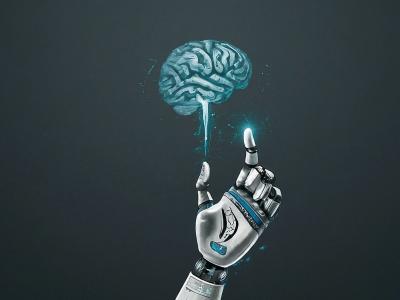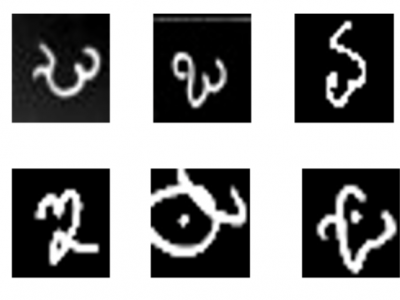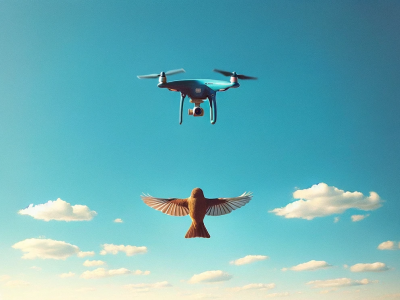Artificial Intelligence
Developing mind-controlled prosthetics that seamlessly integrate with the human nervous system is a significant challenge in the field of bioengineering. This project investigates the use of labelled brainwave patterns to control a bionic arm equipped with a sense of touch. The core objective is to establish a communication channel between the brain and the artificial limb, enabling intuitive and natural control while incorporating sensory feedback.
The project involves:
- Categories:
 531 Views
531 ViewsEarly detection of kidney illness can be achieved by training machine learning algorithms to discover patterns in patient data, such as imaging, test results, and medical history. This will enable rapid diagnosis and start of treatment regimens, which can improve patient outcomes. With 98.97% accuracy in CKD detection, the suggested TrioNet with KNN imputer and SMOTE fared better than other models. This comprehensive research highlights the model's potential as a useful tool in the diagnosis of chronic kidney disease (CKD) and highlights its capabilities.
- Categories:
 951 Views
951 ViewsOne of the Dravidian language spoken majorly by 60 million people in and around Karnataka state of India is known as Kannada. It is one among 22 scheduled languages of India. Kannada langauge is written in Kannada scriptwhich has its traces back from kadamba script (325-550 AD). There are many languages which were used centuries back and aren’t being used currently whereas Kannada is one such language which is used even today for writing official documents and are being taught at schools which means it is going to be for many years.
- Categories:
 164 Views
164 Views
This dataset is the result on Voicebank+Demand testset by our proposed model in paper "MDCTCRN: A Lightweight CRN For Monaural Speech Enhancement with Modified DCT" The overall averge PESQ on Voicebank + Demand is 3.14.
- Categories:
 38 Views
38 Views
One of the key problems in 3D object detection is to reduce the accuracy gap between methods based on LiDAR sensors and those based on monocular cameras. A recently proposed framework for monocular 3D detection based on Pseudo-Stereo has received considerable attention in the community. However, three problems have been discovered in existing practices: (1) relying on a high-performance monocular depth estimator, (2) the generated image suffering from visual holes, deformations, and artifacts, and (3) being difficult to be compatible with geometry-based stereo detectors.
- Categories:
 31 Views
31 Views
This study presents a comprehensive dataset to analyze risk factors associated with cardiovascular disease. The dataset comprises various patient attributes, including gender, age, total cholesterol, HDL (high-density lipoprotein), triglycerides, non-HDL (non-high-density lipoprotein), NIH-Equ-2, and direct LDL (low-density lipoprotein). These attributes comprise 25,991 patient data, robustly representing a large population sample.
- Categories:
 436 Views
436 ViewsThe BirDrone dataset is compiled by aggregating images of small drones and birds sourced from various online datasets. It comprises 2970 high-resolution images (640x640 pixels), each featuring unique backdrops and lighting conditions. This dataset is designed to enhance machine learning models by simulating real-world scenarios.
Dataset Specifications:
- Categories:
 711 Views
711 Views
The dataset presents user evaluations for itinerary recommendations generated with three algorithms, PP, PP+TS and PP+TP.
Users evaluated recommendations according to five properties:
- Categories:
 113 Views
113 ViewsSpeech impairment constitutes a challenge to an individual's ability to communicate effectively through speech and hearing. To overcome this, affected individuals’ resort to alternative modes of communication, such as sign language. Despite the increasing prevalence of sign language, there still exists a hindrance for non-sign language speakers to effectively communicate with individuals who primarily use sign language for communication purposes. Sign languages are a class of languages that employ a specific set of hand gestures, movements, and postures to convey messages.
- Categories:
 2543 Views
2543 Views
In deep learning, images are utilized due to their rich information content, spatial hierarchies, and translation invariance, rendering them ideal for tasks such as object recognition and classification. The classification of malware using images is an important field for deep learning, especially in cybersecurity. Within this context, the Classified Advanced Persistent Threat Dataset is a thorough collection that has been carefully selected to further this field's study and innovation.
- Categories:
 1532 Views
1532 Views



